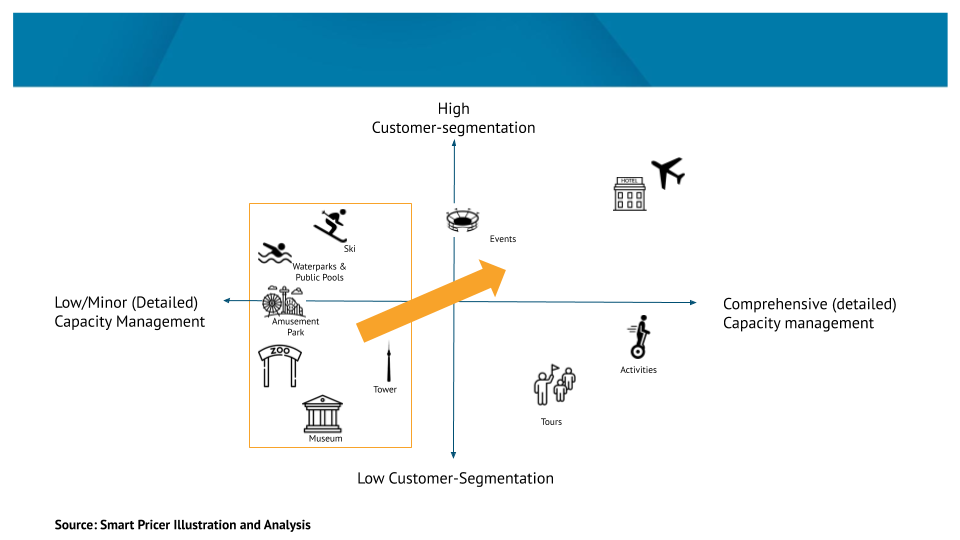Required Capacity Management
The need for capacity management is disrupting ticketing businesses. The regulations for staggered entry, physical distance and additional health measures make profitability difficult for attractions, sports and other entry-based businesses. But these new restrictions do not mean there is no money to be made. Businesses just need to be informed about ongoing restrictions and their options. Making smarter choices can and will ensure profitability.
Before 2020, attractions and other ticketing businesses never considered a capacity management process; there was no need to count heads. Opening was as easy as opening the doors and serving whoever walked through them. Now you need to schedule entry times, track how many people have entered already and ensure that the number of visitors on premises is within capacity limits. The only industry with decades of experience managing capacity in this way is airlines. And just like airlines, ticketing businesses now need to micromanage capacity and carefully segment their products if they want to maximize available profits.
What can Capacity Management do for you?
Adjusting to a managed capacity model fundamentally changes how business is done. Limiting the number of visitors means changing booking systems, booking patterns, ticket offerings, products, as well as gate/door and facility management. By increasing lead time, simplifying payment processes and staggering your entrance process, you can create operational efficiencies and find new profit opportunities.

For ticketing businesses, there may be some surprising benefits. Businesses with low online share benefit from the shift as they gain access to valuable customer data. This data can be used to improve marketing, positioning, product creation, targeting, promotions and many other areas. Increasing lead time incentivizes customers to plan ahead to guarantee access to their preferred attractions. As a result, it becomes easier to predict your demand and removes the randomness of walk-in culture. These changes provide businesses with more data, earlier cash in hand and improved operational planning. But the most powerful change is the ability to price each entry slot differently. Certain times throughout the day or week regularly perform better than others. The capacity limits do not decrease the popularity of time slots, so it is possible to raise the price for them without risking your demand. This not only provides the chance to make up for lost revenue potential, but even find revenue you may have missed.
Moving forward
Managed capacity will be with us for the foreseeable future. Why not take advantage of the benefits? Tackling restricted capacities intelligently can even increase your profits. Let’s take a look at Thredbo, an Australian Ski Resort. They decided to change their product structure and pricing – and sold their entire season in one day. In fact, the enormous demand for ski tickets took down their webshop!
While there is no guarantee that you can make record profits, there is no reason to look at the current situation as risk. Using data and smart decision making you can turn this into a win for your business now and in the future.
Until next time stay healthy and safe.

Franz Blechschmidt
Managing Director, Smart Pricer
